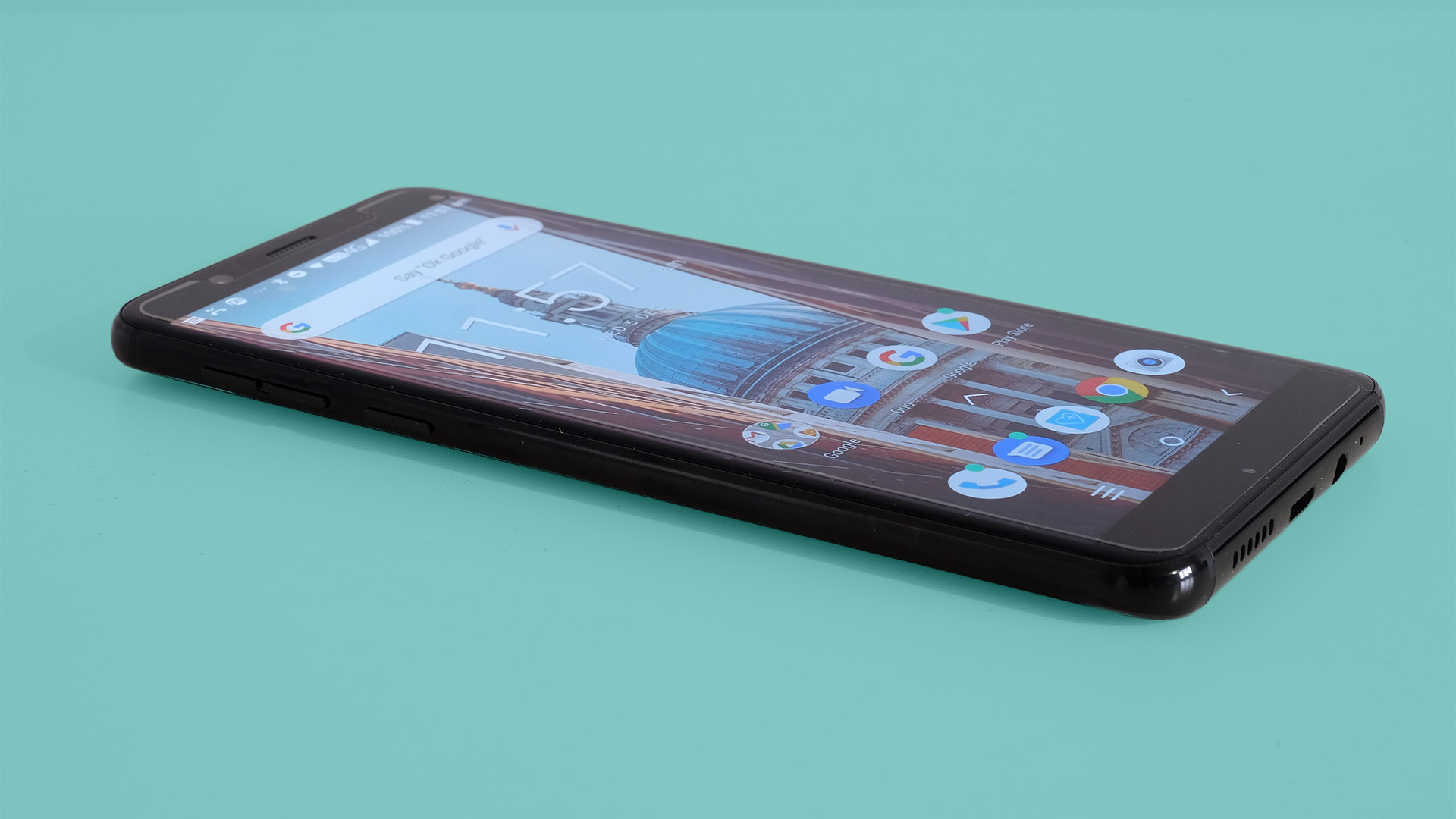TechRadar Verdict
The STK X2 is a bit like a much cheaper OnePlus 6T on the outside, but a few tech wobbles stop it from challenging the best that Motorola and Nokia have on offer.
Pros
- +
Impressive glass and metal build
- +
Lots of storage
- +
Solid performance for essentials
Cons
- -
Borderline broken camera autofocus
- -
Overly cool display
- -
Weak GPU (and CPU)
Why you can trust TechRadar
Who or what is STK? That's a fair question. Search Google for the company in the UK and you'll find a London steakhouse before the phone maker.
STK is a bit like Wileyfox. It's a company that designs phones in the UK and builds them, like every other manufacturer, in China. That Wileyfox comparison is even more meaningful nowadays, as STK has a licensing deal with the brand to use its brand name, after poor old Wileyfox ran into money troubles.
The STK X2 is the highest-priced phone STK has made to date. And, judging by our experience with a few previous models, easily its best.
You'll pay £169.99 (around $210, AU$300) in the UK, and it is not widely available elsewhere. At its claimed £309 (roughly $390, AU$540) original price the STK X2 would be a terrible deal. But this phone was likely born with a deep discount in mind.
At £169.99 it's a solid buy thanks to a lovely metal and glass shell. However, most are still better off with a Moto G6 or Moto G6 Play, thanks to this phone's camera autofocus issues and other problems.
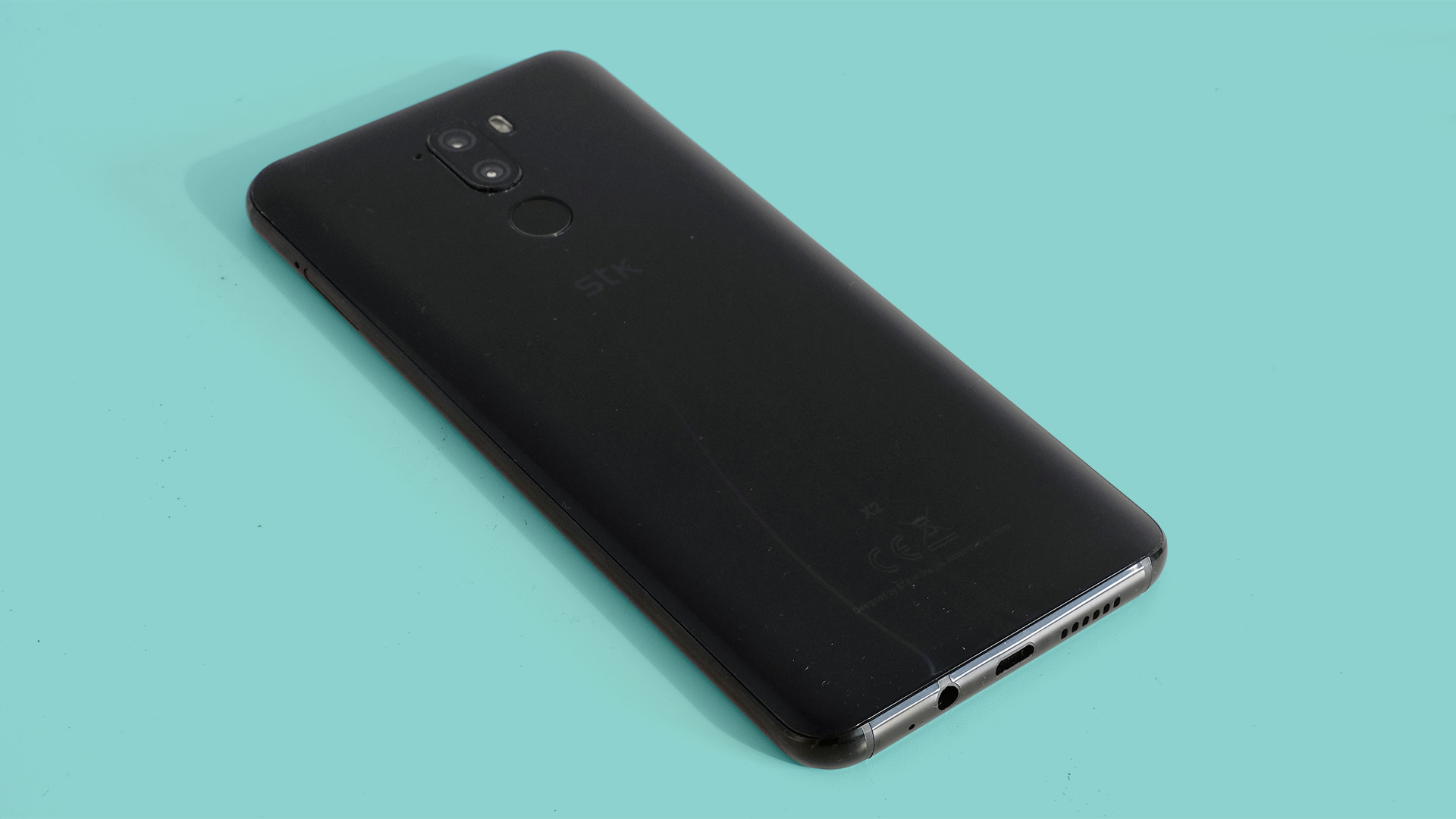
Design
- 2.5D glass and aluminum
- Rear fingerprint scanner
- 64GB of storage
The STK X2 is one of the best-looking phones you can get at the price. Its back is curved glass, the sides glossy-finish aluminum and the front is 2.5D glass, meaning it's lightly curved at the edges.
In some ways this phone looks like a smaller version of the OnePlus 6T. They are not relatives, of course, but given the STK X2 is a third the price, that's quite a feat.
In other ways the Moto G6 is a much more relevant comparison, though. The STK X2 does not have ultra-slim screen borders or a notch, and its size makes it seem a good fit for the budget and casual crowd, not the kind of enthusiasts OnePlus attracts.
This is no dig. A mid-size phone like this is easy to handle, and the display is big enough to handle games and video fairly well.
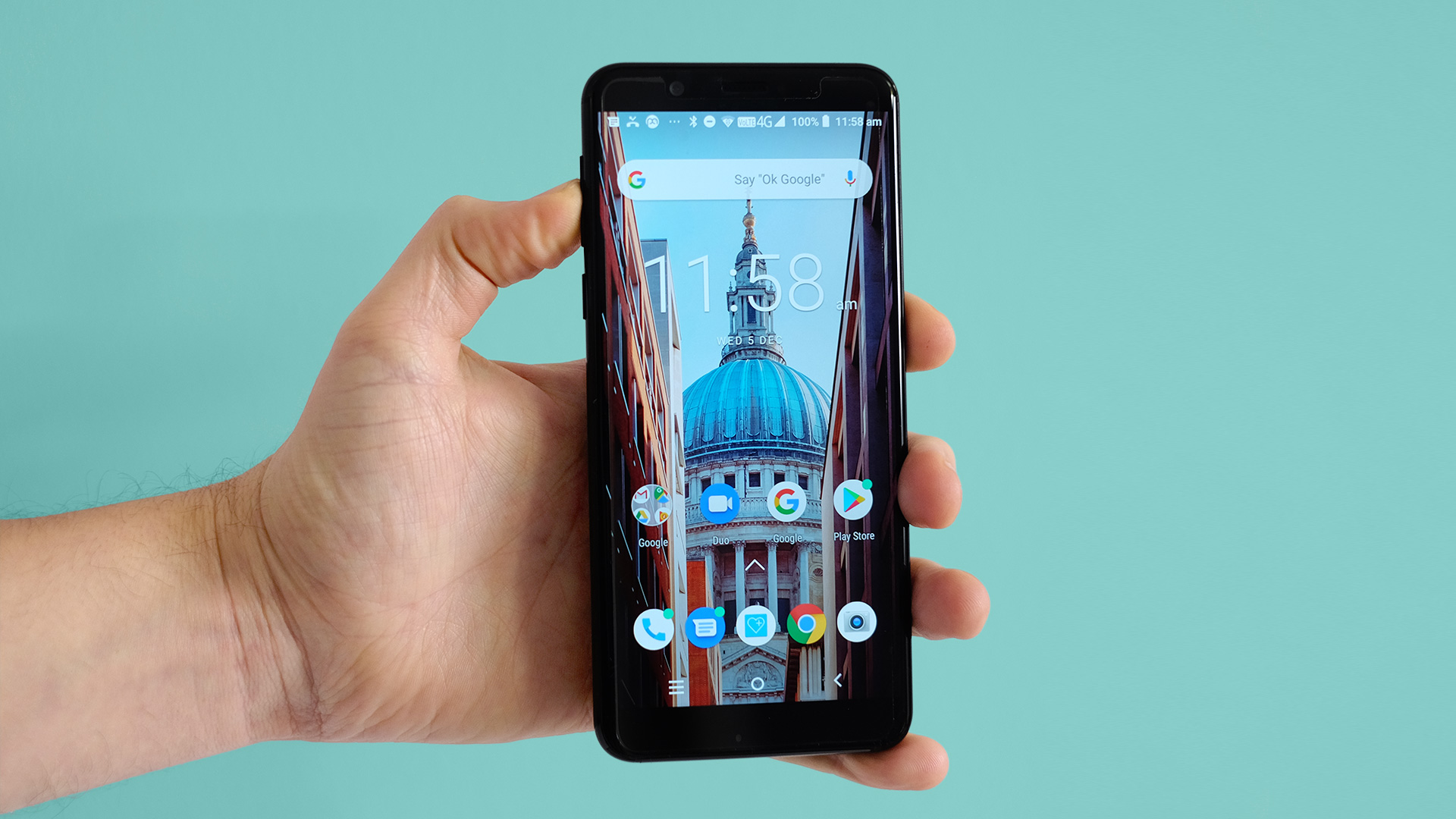
STK puts extra work into making the X2 friendlier for the cash-strapped too. You get a neat silicone case in the box, and a 'half' factory applied screen protector in the box.
The plastic film is attached as standard, but so is the applicator side you need to remove. Ours wasn't perfectly aligned either, and the after taking the backing off we were left with a couple of bubbles.
But, hey, you could do a worse job if you bought your own. Possibly.
All this attention paid to protection is likely there to mitigate the use of cheaper glass in the X2. STK has not revealed the kind of glass used, and it seems safe to assume it’s a generic tempered type. If it were Gorilla Glass, we'd know about it.
Keep the case on and it doesn't matter that much. Play fast and loose without it and you get a phone that feels fantastic for its price. This isn't just down to the use of metal and glass, but also the careful beveling of the aluminum, which gets rid of any hard or sharp edges.
STK also includes a generous 3-year warranty. And while this won't cover accidental damage, there's also an 'in-house' (likely managed by a third-party) screen repair service for the X2. You'll pay £59.99 (around $75, AU$105) to repair a smashed screen.
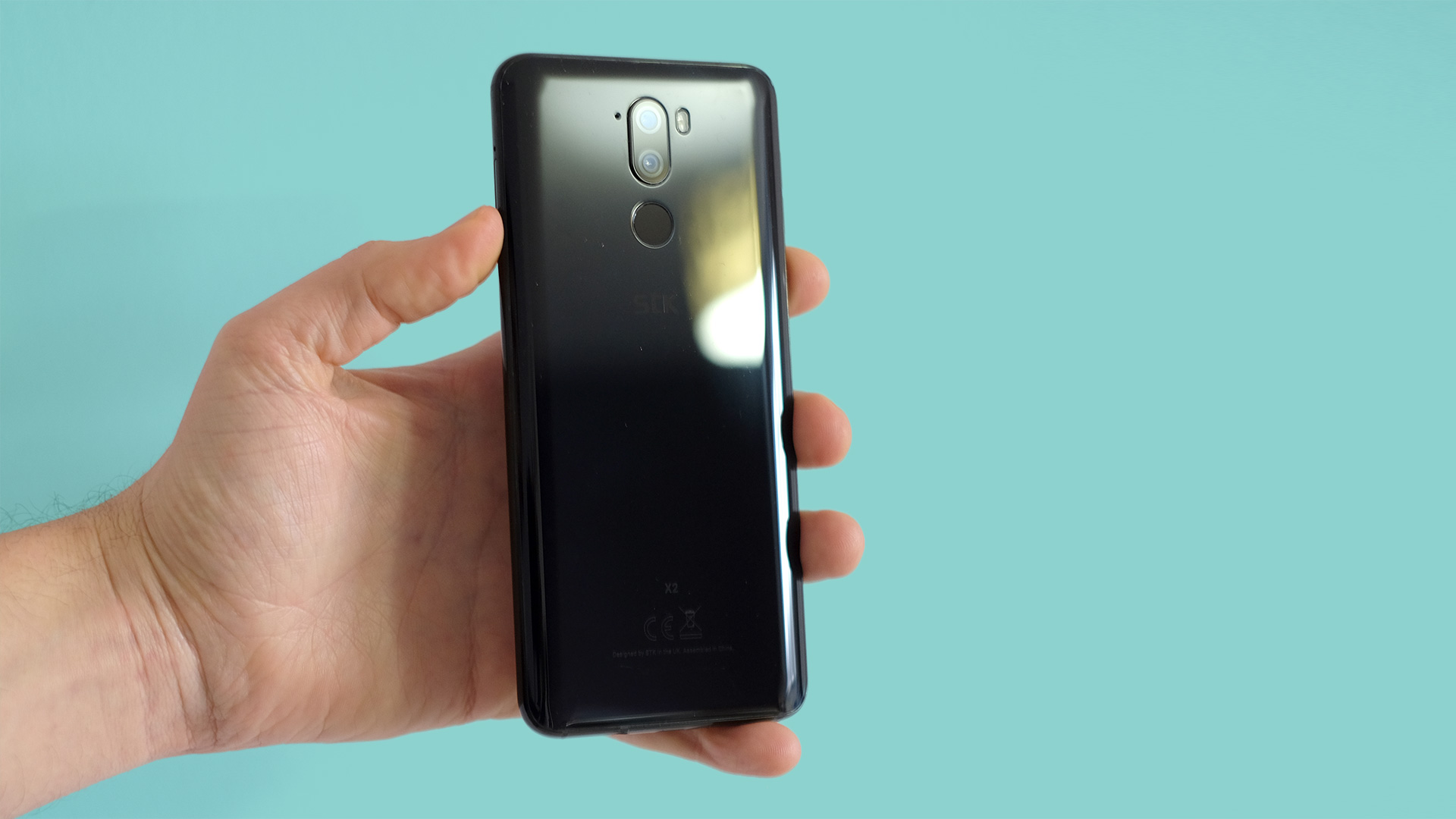
There's little obvious scrimping elsewhere either. The STK X2 has 64GB of storage, double that of the Moto G6 Play, and there's a circular fingerprint scanner on the back. This is not a particularly fast pad, taking up to a second to get you to the home screen, but it is reliable.
The STK X2 even has an ultra-rare extra, an IR blaster on its top. This is used to let a phone act like a universal remote.
That there is no pre-installed app to actually use the thing is a strong suggestion the X2 is a customized ODM (original design manufacturer) phone, rather than one STK has designed millimeter by millimeter. Still, when the results are this charming, does it matter?
Anyway, you can download an app such as Peel to use the IR blaster, and it's likely better than anything STK would make.
The STK X2 has a micro USB charge cable rather than the newer USB-C type, which is typical of a lower-tier phone at present. And the speaker is a very conventional single bottom-loaded driver, but it sounds perfectly decent.
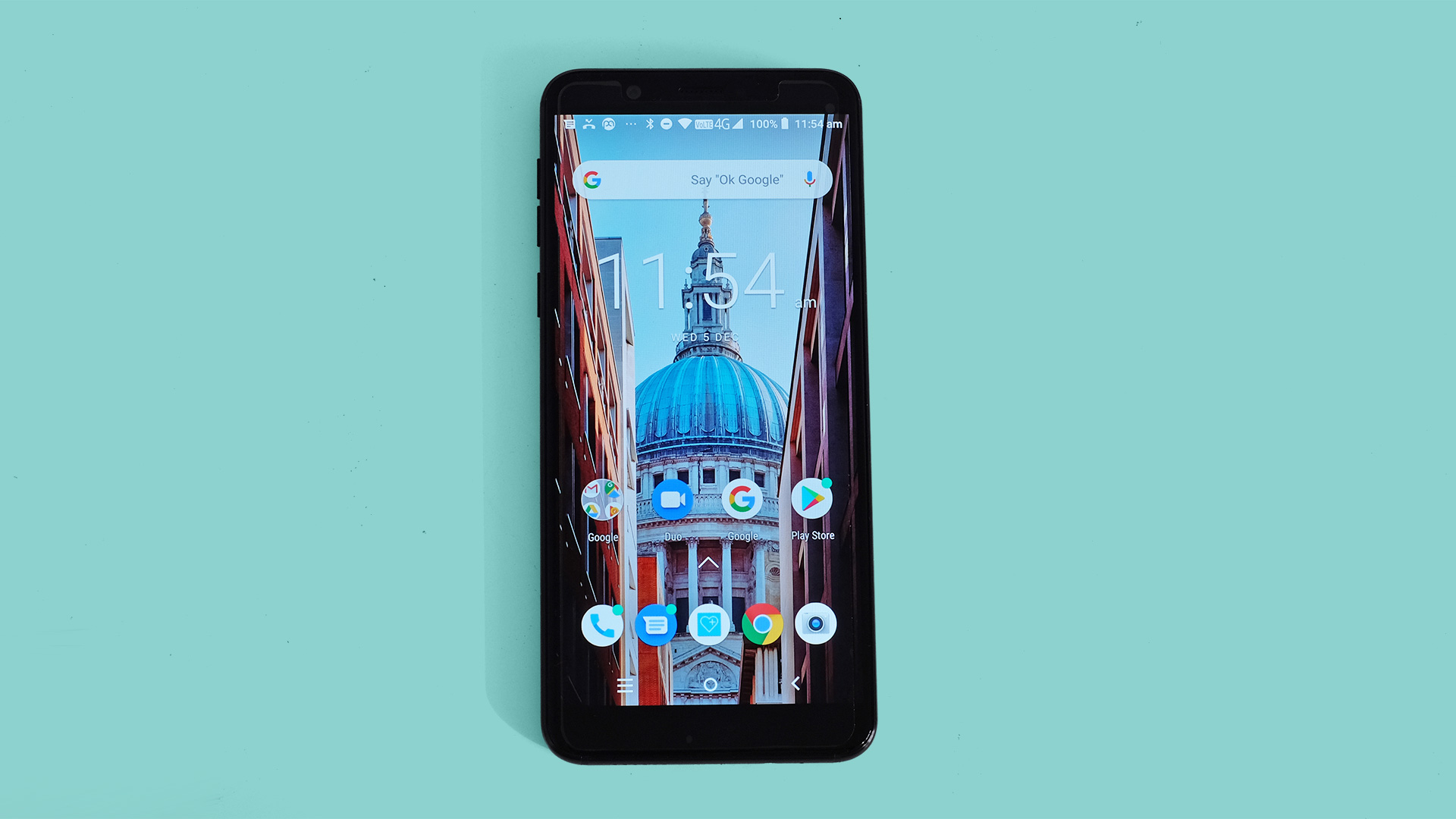
Screen
- 5.7-inch 720 x 1440 IPS LCD
- 18:9 aspect ratio
- Color temperature is cooler than we'd like
Screen notch phones are getting cheaper, but unless you buy a model from one of the many pure Chinese brands like Elephone, Umidigi or Cubot, they don't come this cheap yet. The STK X2 has a standard rectangular screen with an 18:9 aspect ratio, just like the Moto G6.
Resolution matches the Moto G6 Play at 720 x 1440, dense enough to appear sharp from a 40cm distance, if not close-up. At this price, that level of fidelity will do the job. Contrast is solid too.
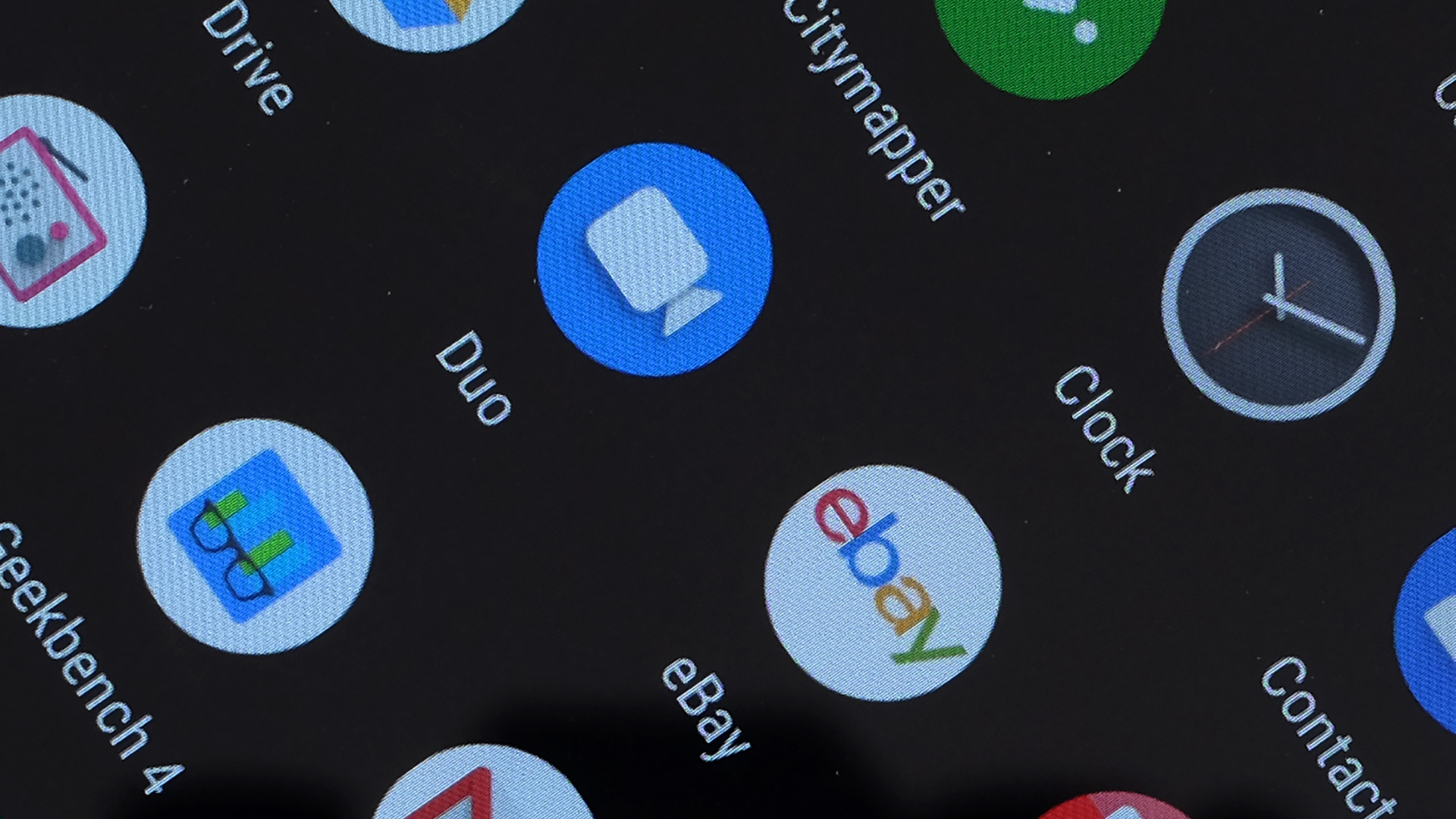
Color is less strong, though. While saturation levels are good, the STK X2 has quite a cool color temperature. This increases the perceived brightness of a screen, but makes whites look slightly blue-tinted.
It does not mean the STK has a lower-quality screen. This is a color calibration choice, but there's no way to tweak it in the settings menu. We think the STK X2 would have a more pleasant look with a warmer tone.
Proper calibration to make the display in-line with one of the industry standards (sRGB, Adobe RGB, DCI P3) would also significantly de-cool the screen.
STK doesn't really need to artificially promote the X2’s brightness either. This isn't a supernova screen, but it fares okay outdoors. There's also a solid auto brightness mode, a very important feature occasionally left out of the cheap phones of largely unknown brands.
Andrew is a freelance journalist and has been writing and editing for some of the UK's top tech and lifestyle publications including TrustedReviews, Stuff, T3, TechRadar, Lifehacker and others.
